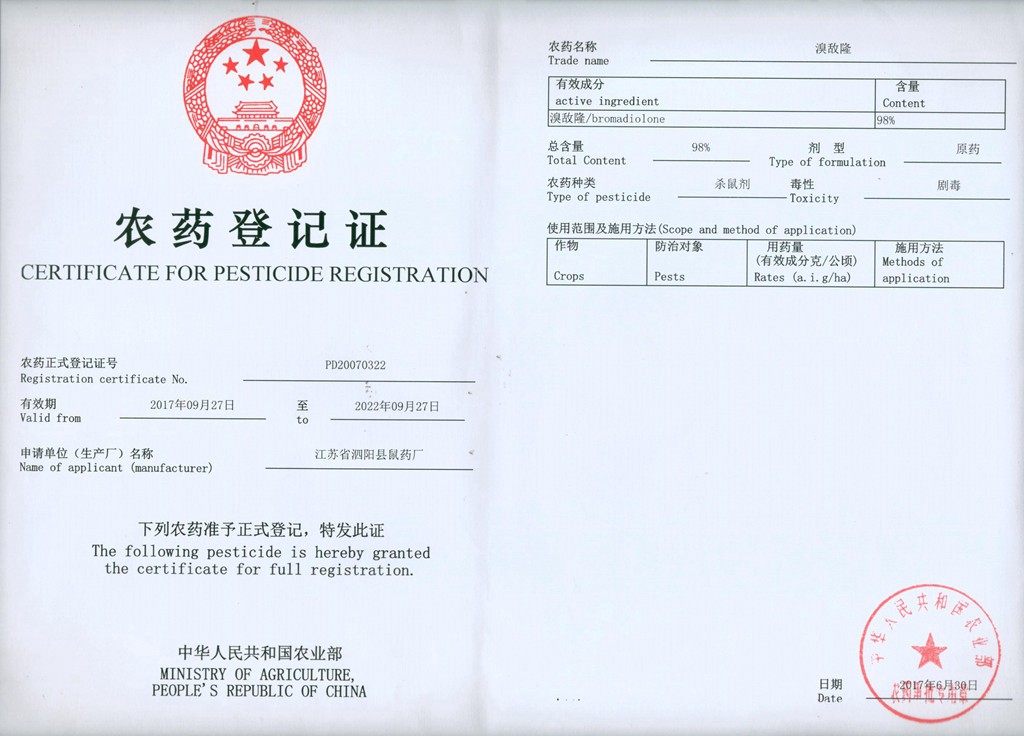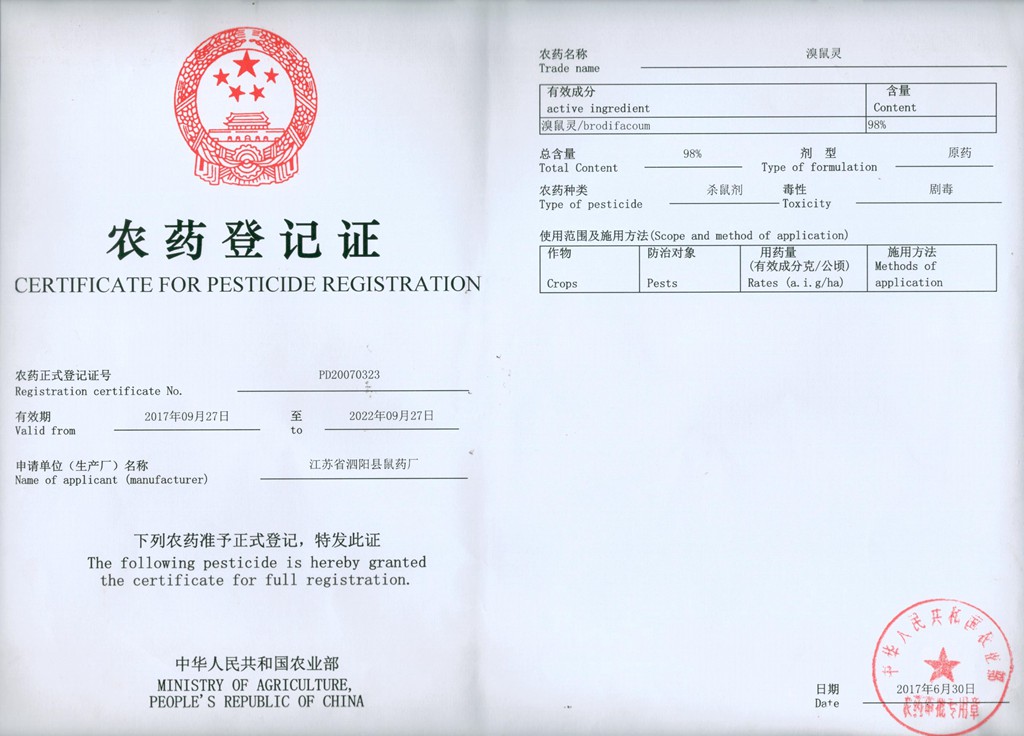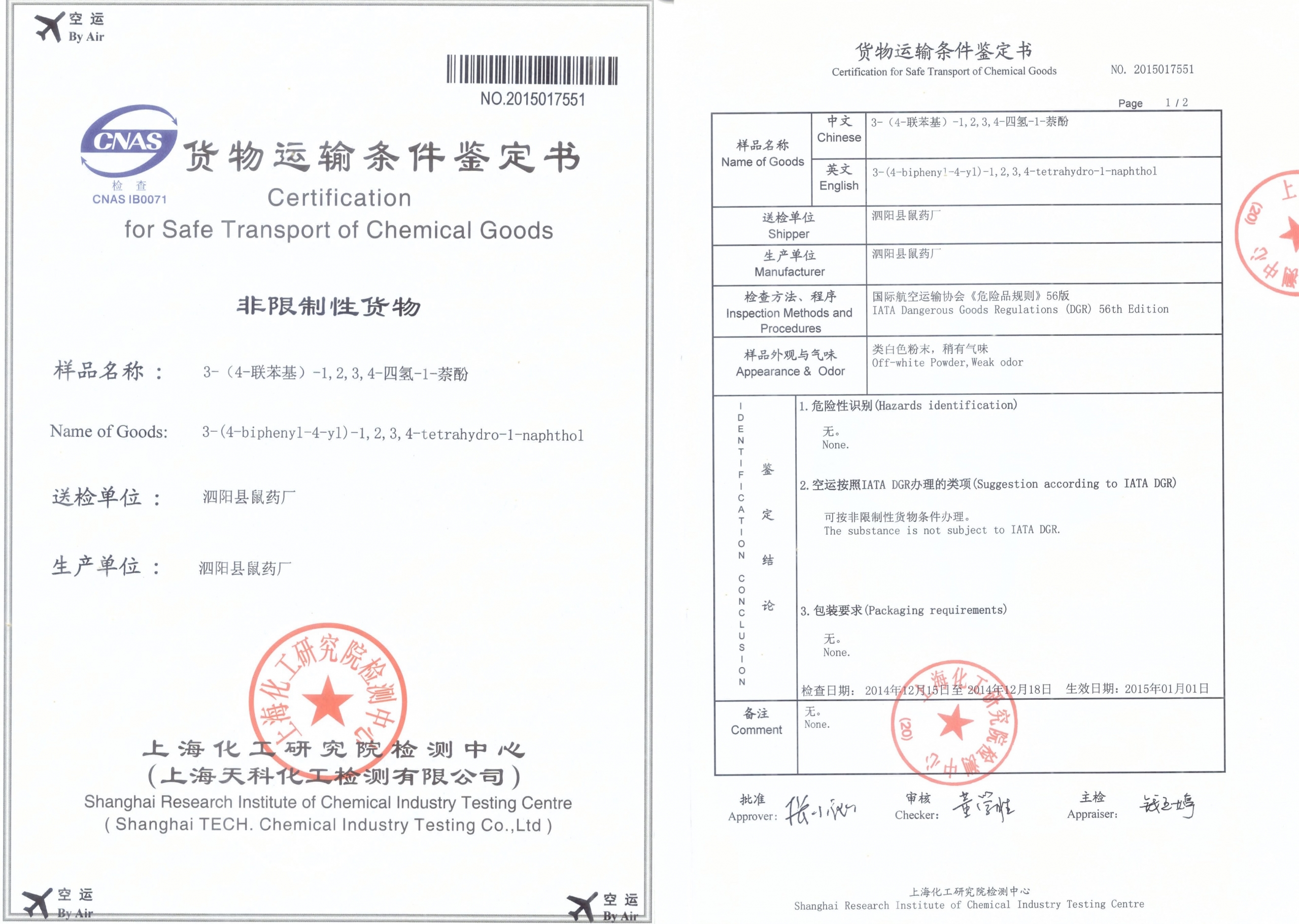In 1985, Siyang Rodenticide Factory was established with the approval of the former Ministry of Chemical Industry.
In 1997, China promulgated its first “Pesticide Management Regulations” (Pesticide Law), Last Revised in 2017.
The agency primarily responsible for pesticide Registration and Export affairs: the Institute for the Control of Agrochemicals, Ministry of Agriculture (ICAMA).
In 2002, China promulgated its first “Law of the People’s Republic of China on Work Safety” (Work Safety Law),” Last Revised in 2021;
the first “Regulations on the Safety Management of Hazardous Chemicals,” Last Revised in 2011;
and the first “Catalogue of Hazardous Chemicals,” Last Revised in 2015.
(Supervised and licensed by the State Administration of Work Safety (SAWS)).





